Adventure
Royal Chitwan National Park, Nepal
-John Eickert

In the morning, we had ridden elephant in the search for a Greater Indian One Horned Rhinoceros. After several hours of gliding through the brush atop our moving giant ‘bristle brush,’ during which time we saw a Sambar
stag and a male peacock in full flight, we did indeed get to meet a young female rhino. Elizabeth informed me that she, the young rhino, was very cute.
We returned to the vehicles and said good-bye to our elephant and mahout. Our guide, Raja, seemed most interested to note how much Elizabeth enjoyed our time riding through the tall grass and Sal forest. He was especially
keen to hear about Elizabeth’s fondness for animals and now elephants. He smiled. We drove back to our camp surrounding by that peculiar rising-ticking heat, which consumes all lowlands in the Indian subcontinent, another tropical day, was at hand.
We ate our lunch; rice, lentils, curried chicken, and tea, then went to our small hut to wait out the heat. Far ahead of his schedule, Raja came to our bungalow to fetch Elizabeth. He had arranged for her to accompany a
mahout as he took his elephant to the river for a bath. Elizabeth was delighted, though nervous, but she quickly changed into attire appropriate for elephant washing. Elizabeth rode the elephant to the river with the mahout. Raja and I walked along behind.
Soon, elephant, mahout, and American woman were in and under the brown jungle river. I photographed the event. Raja watched for crocodiles.
Elizabeth and Bishanti, the elephant’s name meaning beautiful girl in Nepali, took to one another right off. Elizabeth laughed and not to be outdone the elephant began to play. Laughing, splashing, stomach rumbling, gurgling,
head swaying- play; all occurred at once and at times it was difficult to determine who was having the most fun. The mahout stood fascinated. The brown river swirled by. I ran out of film and loaded another.
Time passed and the mahout signaled Bishanti to go back to work. Elephant and American showed their displeasure as one. Those moments in life, you can count them on one hand, are fleeting. The mahout invited Elizabeth to
drive Bishanti back to her paddock, something I had never seen or heard of before, a rare honor. Elizabeth sat just behind Bishanti’s great ears and directed her with voice commands. Then, it was over and time to say good-bye. Bishanti and now American female
number one Nepali elephant driver, Elizabeth, shed tears, the warm parting of friends.
We spent four days in all at Royal Chitwan in southern Nepal. We observed gharial at sunset and marsh mugger before breakfast. The jungle parted long enough for us to see birds, deer, and rhino. Tiger and leopard remained
hidden, though no doubt they witnessed our passing. It was a magical visit. Elizabeth acquired a friend for life and I will be hard pressed to remember a time when I had laughed so much. Life is the great adventure, cheers.
P.S
See the trailer of “Wilderness Nepal” shot mostly in Chitwan National Park by clicking here
http://www.youtube.com/watch?v=uvRbbHzS4bI
See this film online at
https://youtu.be/x_ItJgChudo
|
Burning Issues
TRIBAL RIGHTS OR WRONGS
-Shivani Thakur
A Scheduled Tribes (Recognition of Forest Rights) Act has been drafted by Ministry of Tribal Affairs. This entails giving land back to tribal people who were deprived of their lands by the imperial powers at that time to reserve forests for commercial
purposes. This bill when enacted would undo the historical injustices meted out to the ‘adivasis’. This bill has lot of clauses among which are granting rights as well as duties to forest dwellers and safeguarding health of forests. The bill also says that
forests including protected areas and national sanctuaries some of which have tribal population will be divided between Ministry of Tribal Affairs (MTA) and Ministry of Environment and Forests (MoEF).
But even before this bill can be enacted, many environmentalists and few politicians are up against many of its clauses. The forests reserves are managed by MoEF.”According to Himraj Dang, who has written a book on Sariska National Park, “this could
spell disaster. If this bill gets passed around 15 percent of forest area would be transferred from MoEF to MTA.”
The MTA would offer these lands to government agencies for development for projects like schools, dispensaries etc. Whether this would actually help tribals or help the people who promote this bill to reinstate themselves to power is debatable. How can
the same government agencies provide all these facilities inside forests when they have failed to deliver them outside forests?
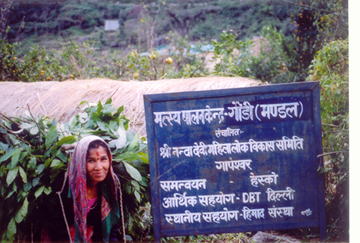
Although there is another clause that says that no more than 50 trees will be allowed to be felled and planting and maintaining twice the number
of trees along with promoting indigenous species is risky. This may seem very simple on paper but maintaining a balance would not be easy because if laws are violated the responsibility would be shuttled between the two ministries because of duality of control.
This loggerhead situation has resulted in many diverse opinions. Sunita Narain, Tiger Force Chairman, has supported the bill in principle saying that a threat is not seen to protected areas if we accept the tribals right to minor forest produce. But she also
advocates community reserves where communities living on the periphery of sanctuaries
can actually help in controlling the depleting population of animals and illegal cutting of trees.
Project Tiger ex-director H.S.Panwar and activist Valmik Thapar have opposed it vehemently. Panwar says that traditional nomadic lifestyle is not viable in many parts of India due to the decreasing land-people/livestock ratio. Tribals were wrongly stripped
of their rights under colonial rule but restoring to pre-colonial situation would be a mistake. “ We must share the economic fruits of our mega-diversity with locals and address their livelihood concerns”
A new approach to conversation is needed which protects the whole ecosystems. Resettlement of tribals, providing equivalent amounts of land, and executing
with the help of courts and NGO’s would end the long suffering of tribals. Discouraging direct subsistence on forest resources is not denying the tribals their rights. The forest belongs to them and their future will be secure only if they have an option to
live on the interest and leave the capital untouched.
( Photograph taken at Mandal, Uttaranchal by Shashi Sharma )
|
Common Birds of India
Grey Tit ( Parus major)
-Ragoo Rao
This month the bird I have selected is the Grey tit. Since the rains are almost ending, the insect population is at its peak and active. This is the season when one finds
the Grey tit being actively noticed flittering from branch to branch looking for insects under the leaves and twigs.
A small sparrow sized bird with a striking black head and grey body which is whitish in the underside.
A prominent black band all round the neck tapering down the centre of the chest right down to the end is the distinguishing feature of the Grey tit. Another prominent feature is the white cheek patches. Both sexes are alike,
only a slight difference in size distinguishes the female, which is
smaller.
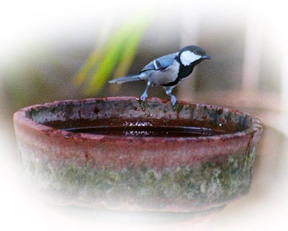
These are restless birds flicking from twig to twig almost in jerks looking for insects hidden under the leaves and on tree trunks. Another marvelous feature of this bird
is its fancy to cling upside down on tree trunks foraging for insects.
Their distribution is through out the country all though there are five races slightly differing in coloration hues.
It is mostly seen in urban gardens with medium sized trees foraging for insects, especially during dusk, for this is the time for insects to venture out. These birds are often seen along with Bulbuls and other similar insectivorous birds like the tailor
bird and small warblers during this time.
A very restless bird, they fly away at the slightest noise or a disturbance.
Water seems to be its weakness, for it is sure a accept a drink if one provides a bird bath at a quiet shady place in the garden.
If they like the peace around they almost make it their own water source and might even settle for their regular baths. This is a sure way of inviting these birds to your garden and observing them quietly. They seem to like being photographed. Most of
the grey tit's photographs looks like the birds have been posing for a good picture.
Their chirping while foraging in trees...Twee..chichi....whee...chichi...is very reminiscent of the male house sparrow's chirps. During breeding season the male can be seen
taking a high position in a medium sized tree and loudly and clearly going...
hee...chi..chi...whee..chichi...
continuously trying to impress the females. Whether they pair for life or not is a matter to be studied and confirmed, for they are always seen in pairs rather than flocks.
Nesting season varies with locality but broadly it is between Feb to Nov and sometimes they even raise two broods in a year. Very much like the domestic sparrow.
They select a hole in a tree or a niche in a high wall. The nests are lined with moss, feathers and animal hair.
Normally 4 to 6 whitish, spotted or speckled with brown eggs are laid.
Both sexes share all domestic chores.
A beautiful bird which is a challenge to bird photographers to get a good shot at it.
Lets cherish this bird and marvel at nature’s creations.
|
Did You Know ?
Water Harvesting
-Geeta
Verghese
As we hurtle into the 21st
century the possibility of future wars being fought over water has begun to haunt nations making it a theme for discussion at international conferences.
Over the years rising populations, growing industrialization and expanding agriculture
have pushed up the demand for water. Efforts have been made by Governments to collect water by building dams, reservoirs and digging bore wells. Some governments have also tried to desalinate water. To recharge ground water by rainwater harvesting and to also
conserve water has therefore become the need of the hour. It is at such junctures that we need to pause and learn from the wisdom of our ancients- their ability to live in harmony with nature while respecting the need to always maintain the balance between
consumption and replenishment.
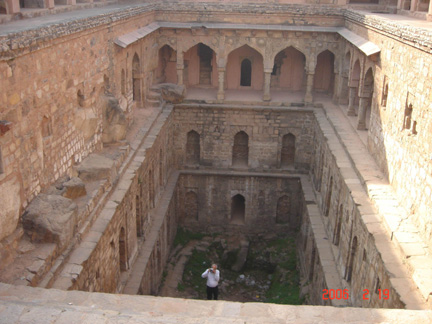
Today governments have taken over the responsibility of providing this scarce and precious
resource to the people. As a result, the quality, quantity and even the price charged for the water-supplied leaves the people out of the decision making process.
In ancient India, managing water resources were left essentially to the community. Forts had their own water harvesting and storage systems in the form of rock-cut cisterns, ponds,
tanks and wells that can be seen in use even today. In desert towns in Rajasthan,
innovative methods for water harvesting were devised: houses were constructed in such a way that each had a rooftop water
harvesting system. Though scanty, rainwater from these rooftops was directed into underground tanks.
Over 2000 years ago, Buddhist monks living in the Kanheri caves near Borivli National Park made grooves in the rock face outside
the caves where they meditated, to direct the rainwater into small tanks dug into the rock These tanks still contain water even during the hot summer months. Next to the dargah of the Sufi saint Nizamuddin in Delhi there is a large tank, dug under the supervision
of the saint. Even today, boys can be seen diving into the cool waters of the tank. Near Mehrauli there is the three-storied step-well known as Rajaon ki Baoli and the five-storied Gandhak ki Baoli, named for its strong sulphur smell. While supplying water
to the area, the terraces of these baolis also provided a cool environment for people to get together during the hot summer months.
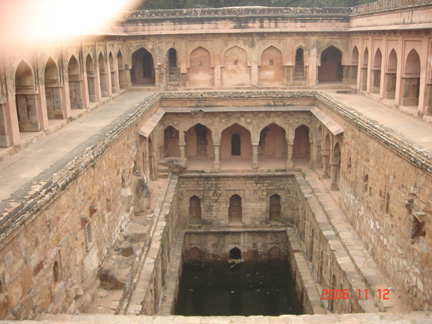
Ancient Indians knew that vegetation in forests help rainwater to seep gently into the ground. This ground water would in
turn feed wells, lakes and rivers. Protecting forests meant protecting water ‘catchments’. In Ancient India, people believed that forests were the ‘mothers’ of rivers and worshipped the sources of these water bodies as Van Devta (forest god), Vriksha Devta
(tree god) and Kalpavriksha (the wish-fulfilling tree).
It is for modern man to realize that the artificial environment of a 150-storied apartment block cuts him off from his very
life source, the elements that nourish life on this planet and the only way forward has to be to return to Nature.
( Photographs of Rajaon ki Baoli, Mehraulli, New Delhi, taken in February and November by Susan Sharma.
There is some water in the baoli in November. The baoli is fed by a well situated at the back of the structure.)
P.S You may find interesting reading on water related issues at our
BLOG
too!
|
Eco-travel
On a trail of the Ganga -PART VI
-Saraswati Kavula
A small Tibetan village, Bagori was just a kilometre away from Harsil. The walk was very pleasant, and the people a mix of locals and Tibetans too very friendly and pleasant. The children, who were
playing in their school compound, waved and wanted to speak in English only. They waved out and jumped the walls to sit around and chat. The village was famous for its woollen products. The men reared the sheep and the women made the yarn and knitted the sweaters.
The girls were surprised to see that I travelled alone. Sujata remarked, ‘I wish we could enjoy life like you, here we have to be constantly at work, knitting, making the yarn’. Sujata and her friends study at Uttarkashi, since there is no proper high school
in these areas. For six months, we go to Dodi village near Uttarkashi, since it gets completely snowed in here”. But then school is on for nearly 10 months no?’ ‘Those who have to study stay there only, and come here for the holidays, like us, but the elders
and sheep rearers and farmers come back to take care of the sheep and farms’.
They were all eagerly waiting for the results of the 10+2 exam which was due that day. ‘The boys will go to Harsil and find out. Some of our friends are in Uttarkashi, they will browse the internet, and tell us. The results are declared on the net.’
Sure enough, it was difficult to get a turn to make a call at the two telephone booths in Harsil. I asked Sujata, ‘Now that most of you are educated, will you take care of your parents lands, and do agriculture?’ Sujata, said, ‘No, I don’t think so, most of
us go to the plains to Dehradun and Delhi to study further and many stay back to work in hotels and other such jobs’.

I noticed that some of the girls and many of the boys had coloured their hair. I was surprised. Sujata said, ‘we saw on TV and so it became a trend here!’ I asked her where she saw TV, ‘not
here, in Dodi and Uttarkashi’. Bagori doesn’t have electricity, although the local army camp has electricity and so does Harsil. ‘Since we live here for only six months, the government is refusing to provide electricity connections to us’, one of the girls
mentioned.
“Ever since the Uttaranchal state was formed, the government decided that they will earn revenue in two ways- by producing electricity and through tourism”. My co-passenger on the Bus from
Uttarkashi to Rishikesh mentioned. After my visit to Harsil, I was back on the way to Delhi, and had this interesting conversation with my co-passenger who was travelling up to Chamba. “They are planning all these Hydro-electric projects, but all that electricity
is not to be used for the people of Uttaranchal, nor do we need so much, they plan to sell it to other states”, “Our environment is being destroyed to provide electricity to other states. In 1991, there was an earthquake of 6.1 magnitude, with Uttarkashi as
the epicentre. Since, the population is less, there was not much death. But now, the epicentre has moved nearer to Tehri and all the areas below will get affected, right up to Delhi and Haryana’.
‘I suppose the authorities will wake up once there is an earthquake in Delhi’, I remarked. ‘No, there won’t be any change. It will be the poor who will die. All the
rich and the powerful have constructed their buildings to withstand quakes up to 8 Richter scale’. ‘But the rich live in RCC homes, it is they who might suffer more’, I said. ‘You see these small buildings of RCC, most of the slum dwellers and poor people
now live in those, they no longer live in mud houses like before, so, when a quake hits, their homes will be the worst affected. They will pay with their lives. Nothing will happen to all these biggies who live off the contract monies that come from the various
projects, or enjoy the fruits of this ‘development’’. ‘Tourism has become our second focus, but when the water gets diverted with all the tunnels and there is no water in the Rivers, why will the tourists come here? It is a strange situation
for us!’ remarked my friend, a clerk in the local tehsil hailing from a small village called, Hanuman Chatti on the way to Yamumotri.
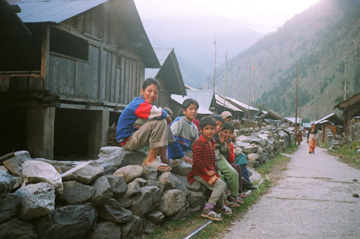
I mentioned that I could hardly find any local food in the entire route. “Doesn’t it affect the farmers, if local produce is not purchased by the hotels and since tourism brings so much money?’
‘It is true, our farmers struggle, but are forced to sell their produce at very less rates, since everything from rice (since all hotels and shops sell Basmati) to vegetables and fruits are brought from the plains. In addition, all our land is being taken
over by the foreign nationals. They come here and buy houses and land for dirt cheap rates. They just work for a month or two in their countries and since cost of living is so cheap, they manage to live here for the rest of the year. But not one of them pays
an extra rupee to the farmer’s produce’. Most of Uttarkashi district is inhabited by foreigners who manage to purchase property through various means, like marrying local women.
‘For them this feels like peace and heaven,’ remarked my friend, ‘of course, the free availability of Hashish is also another reason’.
‘Have you been to Yamunotri? (The birth place of River Yamuna) he asked me. ‘No, may be next time’. I replied. ‘This year there were hundreds of groups, school children and pilgrims and trekkers,
they pass through my village and they have left a heap of trash behind. It is a regular feature for us’ he told me. Despite that, he invited me to come and visit Yamunotri next time, ‘You can stay in our village, in our home. You must come with your team next
time and record the yatra to Yamunotri. We will be happy to see our village on TV’. The hospitable nature of these people never seems to diminish despite everything.
-This series is now concluded.
( Photographs-Woman making wool yarn and Bagori Village by Saraswati Kavula)
|